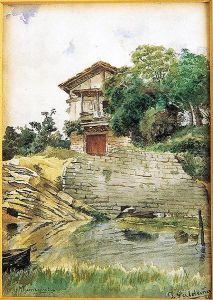Saldana Joaquin Paintings
Joaquín Sorolla y Bastida, often known as Joaquín Sorolla, was a Spanish painter born on February 27, 1867, in Valencia, Spain. Notably recognized for his dexterous handling of light and water, Sorolla excelled in portraying sun-drenched landscapes, seascapes, portraits, and historical works. His style is frequently associated with Impressionism due to the vividness and ephemeral quality of his brushwork, although he maintained a distinct personal style that was grounded in Realism.
Sorolla's early life was marked by tragedy when, at the age of two, he lost his parents to a cholera epidemic. Consequently, he was raised by his aunt and uncle. He demonstrated a keen interest in art from an early age and was enrolled in the School of Craftsmanship and later the Fine Arts Academy of San Carlos in Valencia. In 1885, he obtained a grant that allowed him to study painting in Rome, Italy, where he was exposed to classical and Renaissance art, which would influence his early works.
Sorolla's career evolved rapidly after his return to Spain. He married Clotilde García del Castillo in 1888, who would become the subject of numerous of his paintings, and they had three children. By the late 1890s, Sorolla had developed his signature style, characterized by loose brushstrokes and a luminous palette. He found great success with works like 'Another Marguerite!' (1892), which won a prize at the World's Columbian Exposition in Chicago in 1893, and 'Sad Inheritance' (1899), an emotive depiction of disabled children bathing at the sea in Valencia, which garnered him the Grand Prix and a medal of honor at the Universal Exhibition in Paris in 1900.
Sorolla's fame spread internationally, and in 1909, he had a very successful exhibition at the Hispanic Society of America in New York, which then traveled to cities across the United States. His ability to capture the effects of light with swift brushstrokes brought him numerous portrait commissions, including those from American presidents and European nobility.
Throughout his life, Sorolla was a prolific artist, often working on a grand scale. One of his most ambitious projects was the series of murals titled 'Vision of Spain' for the Hispanic Society of America, which depict various regions of Spain and their customs. However, his work on this project was cut short when he suffered a stroke in 1920, which left him partially paralyzed. He died on August 10, 1923, in Cercedilla, Spain. Sorolla's legacy endures through his masterful canvases that captured the transient effects of light and his honest portrayal of the Spanish landscape and people.
